One thing I’ve noticed about learning is that it doesn’t always fit into nice neat little boxes. In school, we attempt to separate our knowledge into subject areas like math, science, art, language and more, but often, these subject areas overlap each other. As a homeschool mom, I often try to point out the connects between various subjects for my kids and I like using curriculum that integrates this overlap and teaches multiple subjects at once. I was thus super excited to try out the new homeschool STEAM unit studies from Home School Navigator.
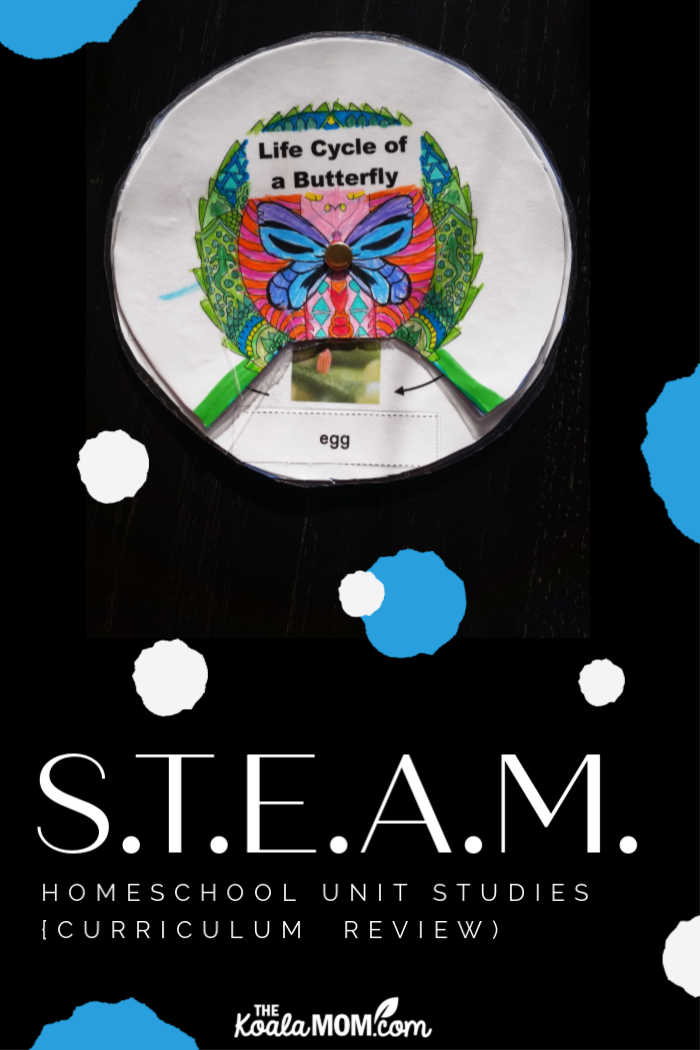
We used the Home School Navigator Reading and Language Arts curriculum last year. This online curriculum got the girls reading tons of great books and thinking critically about what they read. What they liked best about this curriculum was exploring great books with hands-on activities. And that’s exactly what Home School Navigator brings to their STEAM unit studies.
STEAM Unit 1: Weather & Insects (Primary)
Jade, Pearl and I have been using Unit 1: Weather & Insects (primary level) for the past month. Pearl is doing pre-K and Jade is doing Grade 1 this year, so this unit study was a great fit for both of them. A few things were a bit easy for Jade and a few things were a bit hard for Pearl, but I was able to adapt. I like finding curriculum that works well for multiple kids, even if my kids are a couple years (or grades) apart.
This homeschool STEAM unit study is divided into three parts:
- science
- art
- math
Each section starts with a list of materials needed for that unit (great for school prep, which I’m terrible at doing!). It’s easy to glance over this list to see what art or experiment supplies you might need to gather (such as paper towels, chenille stems, balloons) and what books you’ll want to get from the library (or look up on Ready Read Alouds).
The activities are broken into two months, with four weeks in each month. You could do science one day, art another, and math on a third day and spread the lessons out over the two months. Or, if you have an eager beaver like Jade, you could do lesson every day and finish the entire unit study in about two weeks.
Each lesson is laid out in a clear, easy-to-follow format. There’s a materials list for the lesson at the top of the page. The lesson itself is divided into three sections: direct instruction (usually three or four talking points about the lesson’s topic), an experiment, and then debriefing (questions about the experiment and what the student learned). Each lesson was probably only ten to twenty minutes in length (perfect for kids of this age who have a short attention span!).
The lessons are based heavily on Eric Carle’s books The Grouchy Ladybug, The Very Busy Spider and The Very Hungry Caterpillar. Eric Carle’s artwork inspires the art projects in the Art section. His fun books draw kids into learning more about ladybugs, spiders and caterpillars (and discussing whether the bugs would have actually acted as they do in the stories!).
Learning about the Weather
Science Month 1 was devoted to learning about the weather. For this unit, Jade and Pearl made raindrops and a rain gauge and explored wind and clouds.
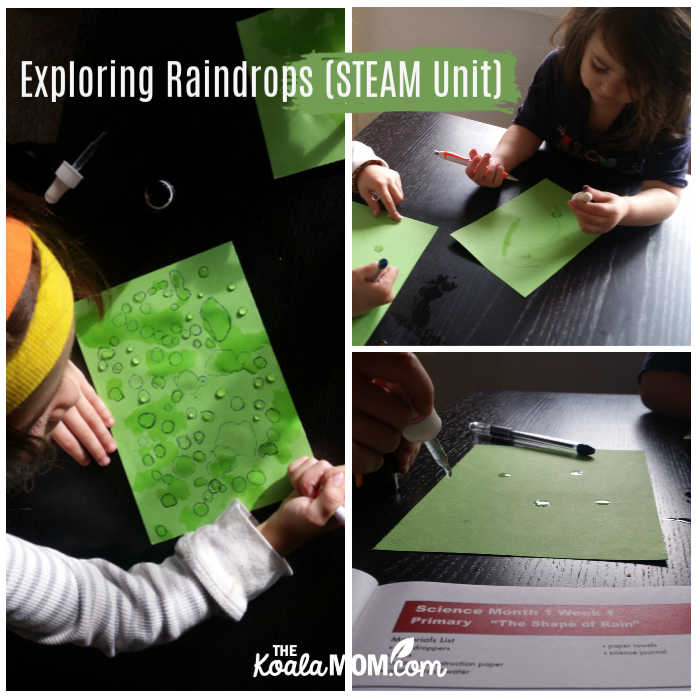
We’ve had a relatively sunny, nice fall here in Vancouver. Jade was disappointed that her rain gauge didn’t collect any water for a few days. Then one rainy day arrived and even I was surprised at how much rain fell!
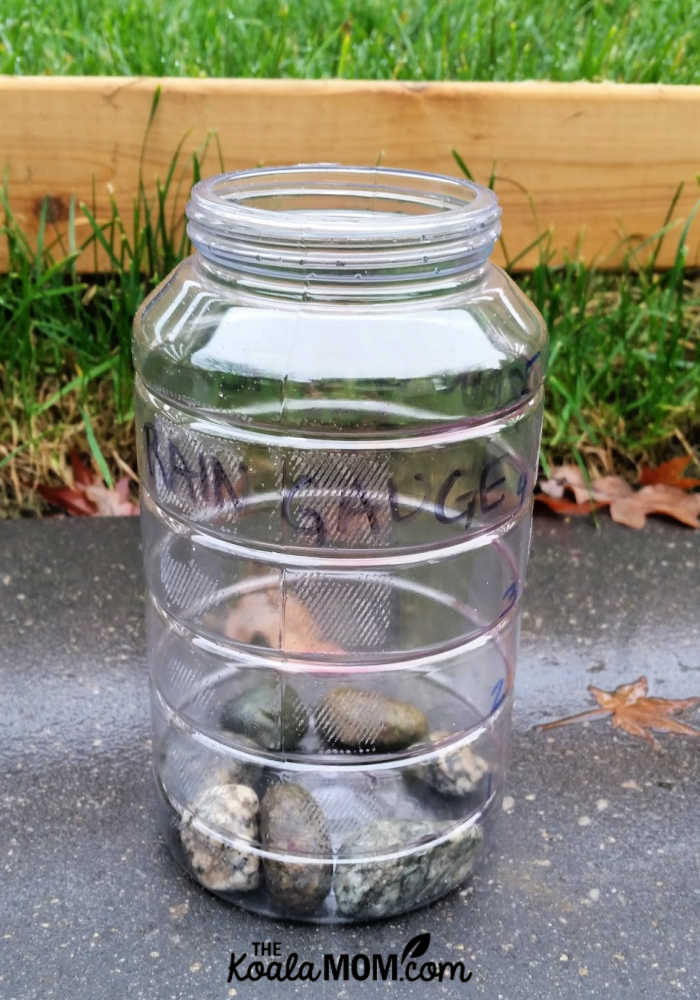
We also made clouds with paint for one of the art projects.
Learning about Insects
Science Month 2 was devoted to learning about insects and spiders. Jade really enjoyed this part of the unit study because we’d recently watched Charlotte’s Web. She immediately connected her new learning to what she’d seen about Charlotte in the movie. She also really liked the crafts that went with this unit. Kids of this age are very hands-on and love creating, so the overlap between arts and science is perfect.
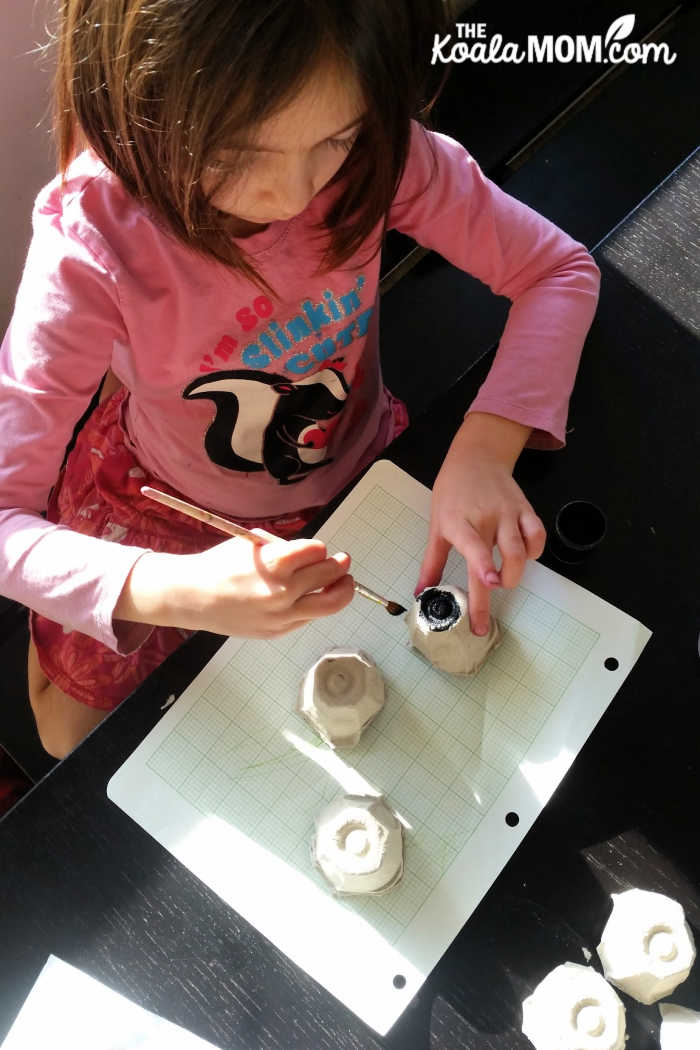
Jade really liked her egg carton ant. She carried it around with her for a few days. We used ribbon to make its antennae instead of pipe cleaners and didn’t add its legs. It still turned out very cute and made a good visual reminder that an ant has three body parts.
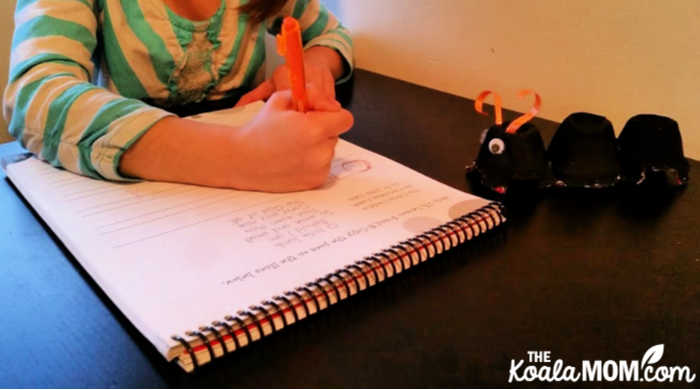
While there are separate sections for science and art, this was where the most overlap happened in this unit study. Jade also made a spider on a web and and a butterfly in the art lessons, and painted ladybugs. In science, she made a 3D ladybug from paper plates, complete with the inner wing that folds up. This was a science project, but used Eric-Carle style art:
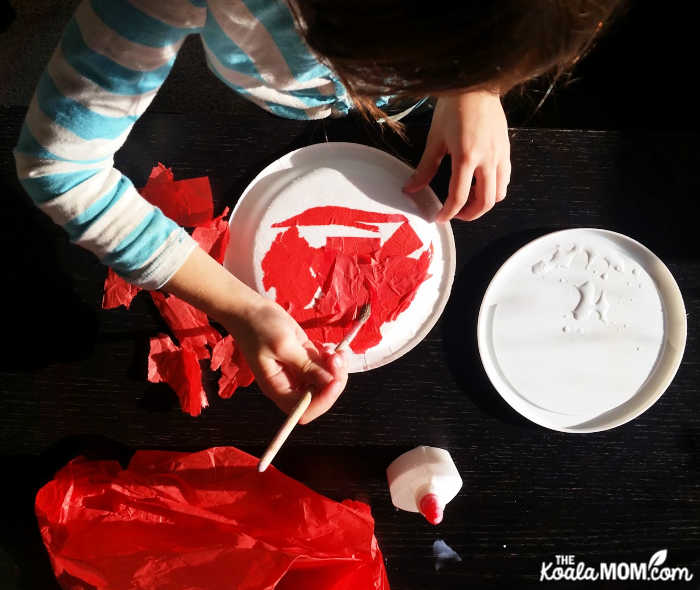
The finished ladybug is an impressed piece of artwork that demonstrates how a ladybug’s wings work for curious primary-level students:

Primary Math
I found the math section of this unit study less useful than the art and science sections. The lessons covered place value and inequalities. The lessons didn’t fit very well with what either Jade or Pearl are doing right now in math, although we did a few of the activities. I would have liked to see the math integrated more into the other lessons; maybe discussing measurement with the rain gauge or doing “ladybug math” by adding spots on the ladybugs.
More Homeschool STEAM Unit Studies
Home School Navigator has four homeschool STEAM unit studies available for Primary (grades K-3) and Upper Elementary (grades 4-6) students. Each unit study has a teacher’s manual and a student workbook (with activity pages that are perforated for easy removal and use).
The instructor guide contains scripted lesson plans, materials lists, and answer keys separated into eight weeks of lessons for science, math, and art. These lessons are designed for the instructor to simply gather the materials and get started creating!
These STEAM Unit Studies would be great for a homeschool co-op that meets weekly or bi-weekly. You could set up stations for students to rotate between art, science and math activities. Extra student workbooks can be purchased for each child. The activities worked well for just Jade or for Jade and Pearl, but students are invited to collaborate or to compare their work with fellow students.
Do you use unit studies in your homeschool? How do you teach STEAM topics?

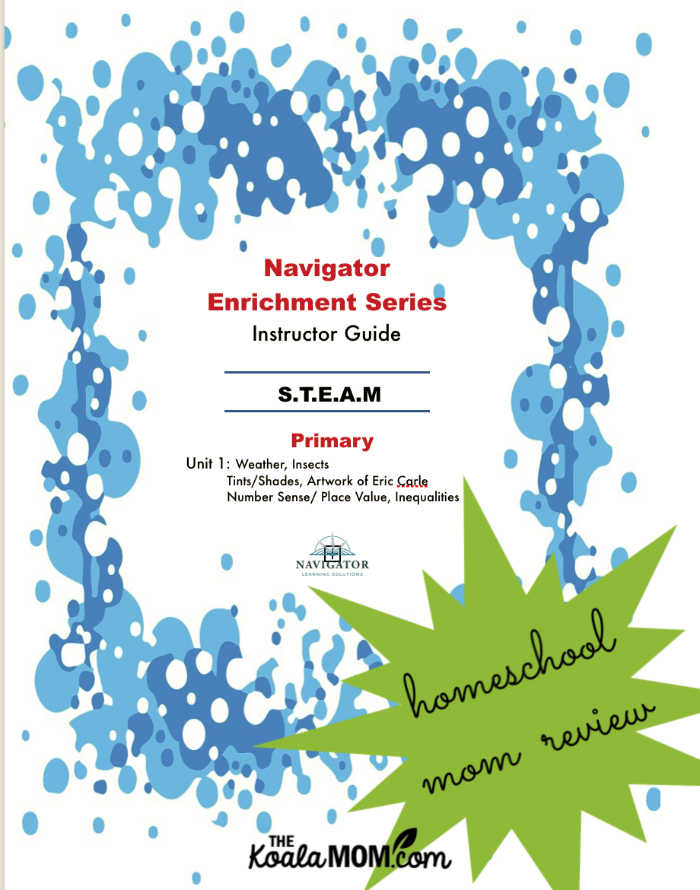
No Responses Yet